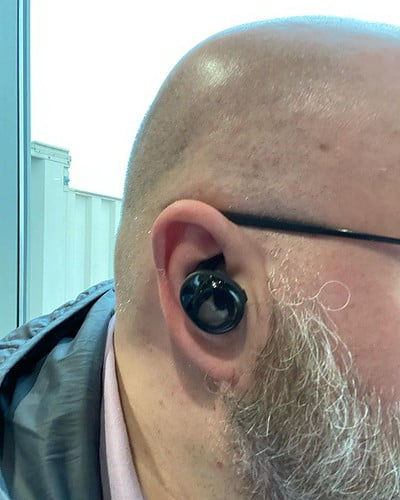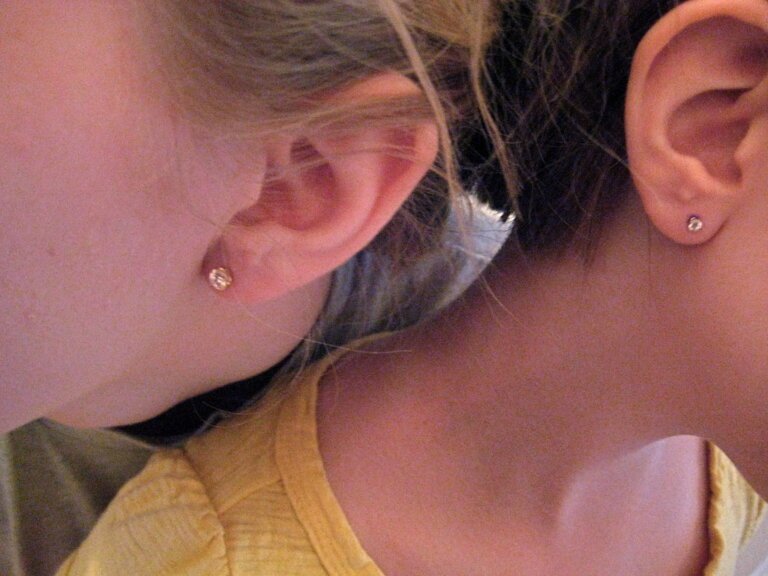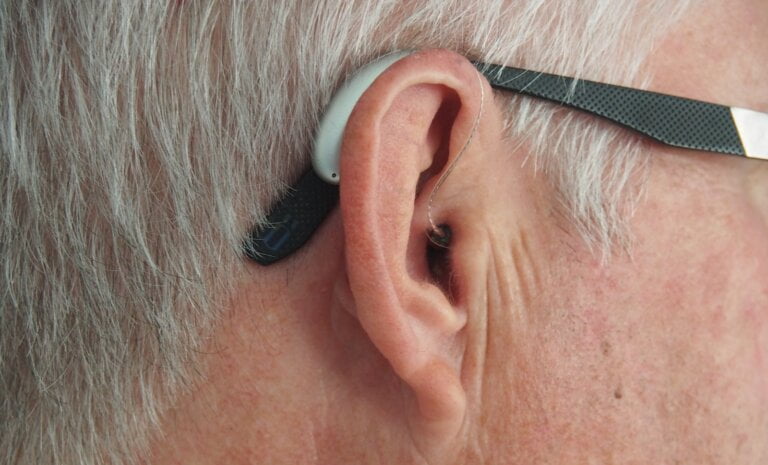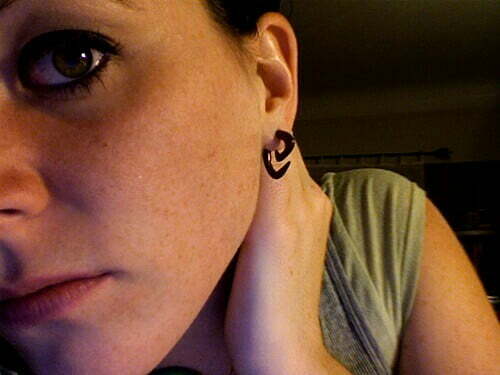Choosing the Right Path: Comparing Microsuction to Manual Instrument Ear Wax Removal
Last Updated on 3rd May 2024 by Admin
Ear wax, also known as cerumen, is a natural substance produced by the glands in our ears. While it serves as a protective barrier for our ear canal, excess wax can sometimes lead to discomfort and affect our hearing. In such cases, ear wax removal becomes necessary. There are various methods available for this purpose, but two popular approaches are microsuction and manual instrument ear wax removal. In this article, we will compare these two techniques to help you choose the right path for your ear wax removal needs.
Understanding Microsuction
Microsuction is a gentle and effective method of removing excess ear wax using a small suction device. It is performed by trained professionals, usually audiologists or ear care specialists. Here are some key points to consider about microsuction:
-
Safety: Microsuction is considered to be a safe procedure when performed by a trained professional. The use of a suction device ensures precise and controlled removal of the ear wax without any risk of damage to the ear canal or eardrum.
Microsuction is a safe method of ear wax removal because it is performed by professionals who have received specialized training. The use of a suction device allows for precise and controlled removal of the wax, minimizing the risk of injury to the delicate structures of the ear. Unlike other methods that involve the use of instruments, microsuction eliminates the risk of accidental damage to the ear canal or eardrum.
-
Suitability: Microsuction is suitable for most individuals, including those with narrow or curved ear canals. It is particularly recommended for individuals who have a history of ear infections or previous eardrum perforations.
Microsuction is a versatile method that can be used on individuals with different ear canal shapes and sizes. This makes it suitable for a wide range of people, including those with narrow or curved ear canals. Additionally, individuals who have a history of ear infections or previous eardrum perforations can safely undergo microsuction as it does not pose a risk of further complications.
-
Effectiveness: Microsuction is highly effective in removing stubborn or impacted ear wax. The use of a suction device allows for thorough cleaning of the ear canal, resulting in improved hearing and relief from symptoms such as earache or tinnitus.
Microsuction is known for its effectiveness in removing stubborn or impacted ear wax. The suction device used in the procedure ensures that the wax is completely extracted from the ear canal, leaving it clean and free from any blockages. This can result in immediate improvements in hearing and relief from symptoms such as earache or tinnitus.
-
Comfort: Microsuction is generally well-tolerated and comfortable for the patient. The procedure is quick, and the suction device used is gentle on the delicate ear canal.
Patients often find microsuction to be a comfortable procedure. The suction device used is designed to be gentle on the delicate structures of the ear, minimizing any discomfort during the process. Additionally, microsuction is a quick procedure that can be completed within a few minutes, further enhancing patient comfort.
-
Minimal Preparation: Microsuction does not require any special preparation before the procedure. However, it is recommended to avoid using ear drops or attempting self-cleaning before the appointment.
Unlike some other methods of ear wax removal that require prior preparation, microsuction does not require any special steps to be taken beforehand. Patients do not need to use ear drops or attempt self-cleaning before the appointment. However, it is important to follow the instructions provided by the specialist to ensure the best possible outcome.
Exploring Manual Instrument Ear Wax Removal
Manual instrument ear wax removal involves the use of specially designed tools, such as curettes or forceps, to physically remove the ear wax from the ear canal. Here are some key points to consider about this method:
-
Precision: Manual instrument ear wax removal allows for precise control over the removal process. The specialist can carefully navigate the ear canal and target specific areas where the wax may be lodged.
Manual instrument ear wax removal offers the advantage of precision. The specialist performing the procedure has direct control over the instruments used, allowing them to navigate the ear canal with precision and target specific areas where the wax may be lodged. This can be particularly beneficial in cases where the wax is deeply impacted or hard to reach.
-
Flexibility: This method is suitable for individuals with different ear canal shapes and sizes. The specialist can adapt the technique based on the unique needs of the patient.
Manual instrument ear wax removal is a flexible method that can be adapted to suit individuals with different ear canal shapes and sizes. The specialist can choose the appropriate instruments and techniques based on the unique needs of each patient, ensuring a tailored approach to ear wax removal.
-
Effectiveness: Manual instrument ear wax removal can be highly effective in removing excess wax. The specialist can directly visualize the ear canal using an otoscope and remove the wax using appropriate instruments.
Manual instrument ear wax removal is known for its effectiveness in removing excess wax. The specialist performing the procedure can directly visualize the ear canal using an otoscope, allowing for a clear view of the wax and enabling them to remove it using suitable instruments. This direct visualization ensures a thorough cleaning of the ear canal.
-
Patient Comfort: While the procedure itself may cause slight discomfort or a sensation of pressure, it is generally well-tolerated. The specialist takes necessary precautions to ensure patient comfort throughout the process.
Patients may experience slight discomfort or a sensation of pressure during manual instrument ear wax removal. However, the specialist performing the procedure takes necessary precautions to minimize any discomfort and ensure patient comfort throughout the process. This may include the use of lubricants or gentle techniques to reduce any potential discomfort.
-
Preparation: In some cases, ear drops may be recommended prior to the procedure to soften the ear wax and facilitate its removal. It is essential to follow the specialist’s instructions regarding any necessary preparation.
Prior to manual instrument ear wax removal, the specialist may recommend the use of ear drops to soften the wax and facilitate its removal. This can make the procedure more effective and comfortable. It is important to carefully follow the specialist’s instructions regarding any necessary preparation to ensure optimal results.
Choosing the Right Path: Factors to Consider
When deciding between microsuction and manual instrument ear wax removal, it is crucial to consider the following factors:
-
Safety: Both methods are generally safe when performed by trained professionals. However, if you have a history of ear infections or eardrum perforations, microsuction may be a safer option.
Safety is an important factor to consider when choosing between microsuction and manual instrument ear wax removal. Both methods are generally safe when performed by trained professionals. However, if you have a history of ear infections or eardrum perforations, microsuction may be a safer option as it eliminates the risk of accidental damage to the ear canal or eardrum.
-
Effectiveness: If you have stubborn or impacted ear wax, microsuction may be more effective in thoroughly cleaning the ear canal. Manual instrument removal can also be effective but may require more precision.
The effectiveness of the method is another important consideration. If you have stubborn or impacted ear wax, microsuction may be more effective in thoroughly cleaning the ear canal due to its ability to provide precise and controlled suction. However, manual instrument removal can also be effective, especially when performed by an experienced specialist who can navigate the ear canal with precision.
-
Comfort: Consider your personal comfort levels and preferences. Some individuals may find microsuction more comfortable, while others may prefer the precision and direct visualization offered by manual instrument removal.
Personal comfort is subjective and can vary from individual to individual. Some people may find microsuction more comfortable due to its gentle and non-invasive nature, while others may prefer the precision and direct visualization offered by manual instrument removal. It is important to consider your own comfort levels and preferences when making a decision.
-
Special Considerations: If you have any specific conditions or concerns, such as narrow or curved ear canals, it is important to discuss them with the specialist beforehand. They can provide guidance on the most suitable method for your needs.
Special considerations should also be taken into account. If you have any specific conditions or concerns, such as narrow or curved ear canals, it is important to discuss them with the specialist beforehand. They can provide guidance on the most suitable method for your needs, taking into consideration any unique challenges or requirements.
-
Professional Advice: Consult with a qualified specialist who can assess your individual situation and provide personalized recommendations. They will consider factors such as the condition of your ear wax, any underlying ear conditions, and your medical history.
Seeking professional advice is essential when deciding on the right method for ear wax removal. Consulting with a qualified specialist who can assess your individual situation and provide personalized recommendations is the best way to ensure that you make an informed decision. They will take into account factors such as the condition of your ear wax, any underlying ear conditions, and your medical history to provide tailored advice.
In conclusion, both microsuction and manual instrument ear wax removal are effective methods for addressing excess ear wax. The choice between the two depends on various factors such as safety, effectiveness, comfort, and individual considerations. Consulting with a professional specialist will ensure that you make an informed decision and receive the most appropriate ear wax removal treatment for your specific needs.
Remember, it is essential to prioritize your ear health and seek professional guidance whenever you experience discomfort or suspect excessive ear wax.
Note: The complete article is shown in markdown format below:
Ear wax, also known as cerumen, is a natural substance produced by the glands in our ears. While it serves as a protective barrier for our ear canal, excess wax can sometimes lead to discomfort and affect our hearing. In such cases, ear wax removal becomes necessary. There are various methods available for this purpose, but two popular approaches are microsuction and manual instrument ear wax removal. In this article, we will compare these two techniques to help you choose the right path for your ear wax removal needs.
Understanding Microsuction
Microsuction is a gentle and effective method of removing excess ear wax using a small suction device. It is performed by trained professionals, usually audiologists or ear care specialists. Here are some key points to consider about microsuction:
- Safety: Microsuction is considered to be a safe procedure when performed by a trained professional. The use of a suction device ensures precise and controlled removal of the ear wax without any risk of damage to the ear canal or eardrum.
- Suitability: Microsuction is suitable for most individuals, including those with narrow or curved ear canals. It is particularly recommended for individuals who have a history of ear infections or previous eardrum perforations.
- Effectiveness: Microsuction is highly effective in removing stubborn or impacted ear wax. The use of a suction device allows for thorough cleaning of the ear canal, resulting in improved hearing and relief from symptoms such as earache or tinnitus.
- Comfort: Microsuction is generally well-tolerated and comfortable for the patient. The procedure is quick, and the suction device used is gentle on the delicate ear canal.
- Minimal Preparation: Microsuction does not require any special preparation before the procedure. However, it is recommended to avoid using ear drops or attempting self-cleaning before the appointment.
Exploring Manual Instrument Ear Wax Removal
Manual instrument ear wax removal involves the use of specially designed tools, such as curettes or forceps, to physically remove the ear wax from the ear canal. Here are some key points to consider about this method:
- Precision: Manual instrument ear wax removal allows for precise control over the removal process. The specialist can carefully navigate the ear canal and target specific areas where the wax may be lodged.
- Flexibility: This method is suitable for individuals with different ear canal shapes and sizes. The specialist can adapt the technique based on the unique needs of the patient.
- Effectiveness: Manual instrument ear wax removal can be highly effective in removing excess wax. The specialist can directly visualize the ear canal using an otoscope and remove the wax using appropriate instruments.
- Patient Comfort: While the procedure itself may cause slight discomfort or a sensation of pressure, it is generally well-tolerated. The specialist takes necessary precautions to ensure patient comfort throughout the process.
- Preparation: In some cases, ear drops may be recommended prior to the procedure to soften the ear wax and facilitate its removal. It is essential to follow the specialist’s instructions regarding any necessary preparation.
Choosing the Right Path: Factors to Consider
When deciding between microsuction and manual instrument ear wax removal, it is crucial to consider the following factors:
- Safety: Both methods are generally safe when performed by trained professionals. However, if you have a history of ear infections or eardrum perforations, microsuction may be a safer option.
- Effectiveness: If you have stubborn or impacted ear wax, microsuction may be more effective in thoroughly cleaning the ear canal. Manual instrument removal can also be effective but may require more precision.
- Comfort: Consider your personal comfort levels and preferences. Some individuals may find microsuction more comfortable, while others may prefer the precision and direct visualization offered by manual instrument removal.
- Special Considerations: If you have any specific conditions or concerns, such as narrow or curved ear canals, it is important to discuss them with the specialist beforehand. They can provide guidance on the most suitable method for your needs.
- Professional Advice: Consult with a qualified specialist who can assess your individual situation and provide personalized recommendations. They will consider factors such as the condition of your ear wax, any underlying ear conditions, and your medical history.
In conclusion, both microsuction and manual instrument ear wax removal are effective methods for addressing excess ear wax. The choice between the two depends on various factors such as safety, effectiveness, comfort, and individual considerations. Consulting with a professional specialist will ensure that you make an informed decision and receive the most appropriate ear wax removal treatment for your specific needs.
Remember, it is essential to prioritize your
Q1: Is microsuction a safe method for ear wax removal?
A1: Yes, microsuction is considered to be a safe procedure when performed by a trained professional. The use of a suction device ensures precise and controlled removal of the ear wax without any risk of damage to the ear canal or eardrum.
Q2: Who is microsuction suitable for?
A2: Microsuction is suitable for most individuals, including those with narrow or curved ear canals. It is particularly recommended for individuals who have a history of ear infections or previous eardrum perforations.
Q3: How effective is microsuction in removing ear wax?
A3: Microsuction is highly effective in removing stubborn or impacted ear wax. The use of a suction device allows for thorough cleaning of the ear canal, resulting in improved hearing and relief from symptoms such as earache or tinnitus.
Q4: Is manual instrument ear wax removal comfortable?
A4: While the procedure itself may cause slight discomfort or a sensation of pressure, manual instrument ear wax removal is generally well-tolerated. The specialist takes necessary precautions to ensure patient comfort throughout the process.







